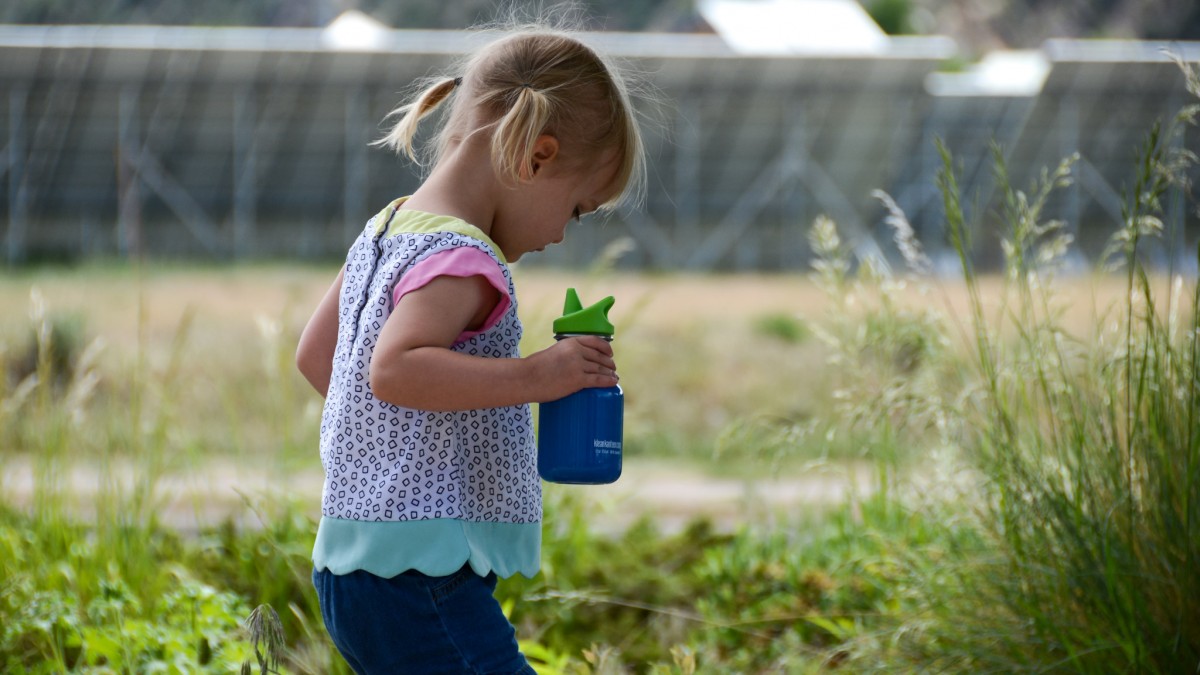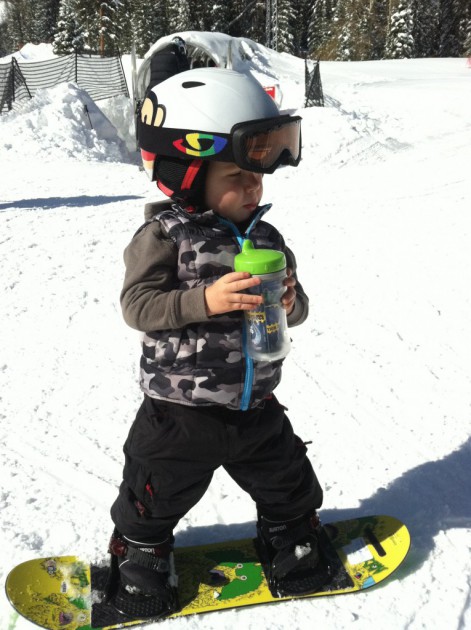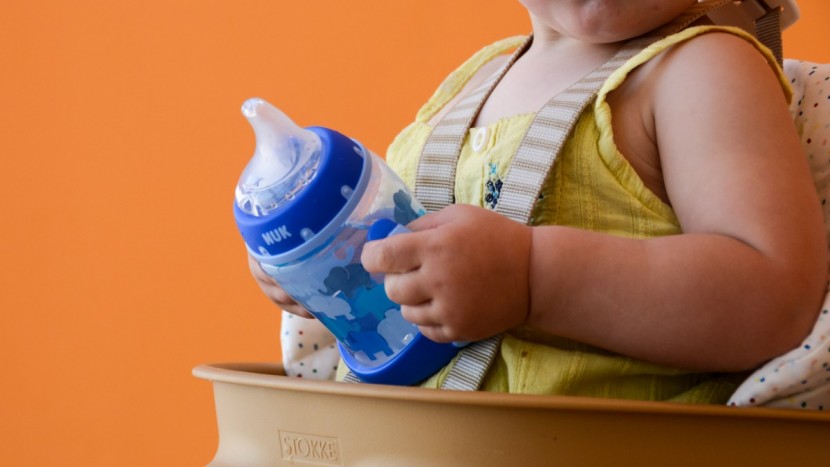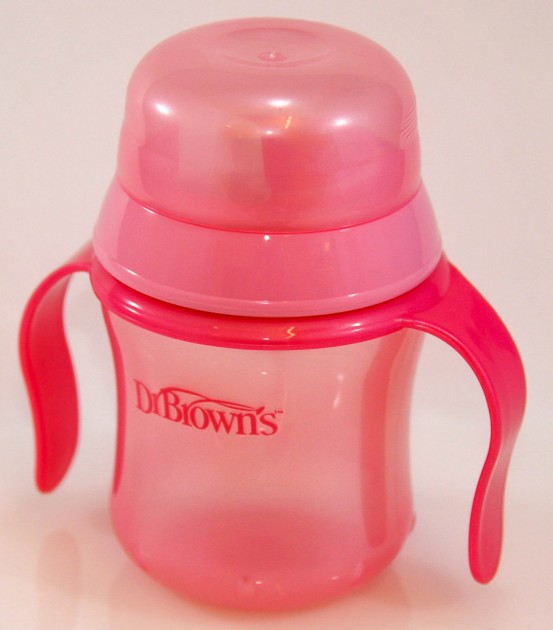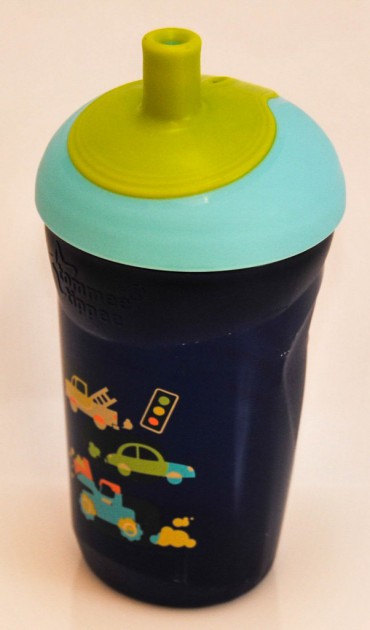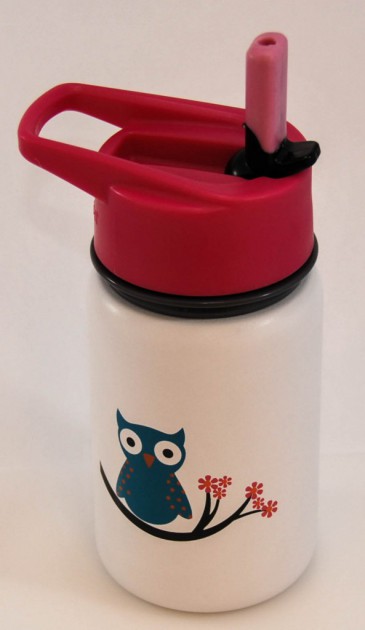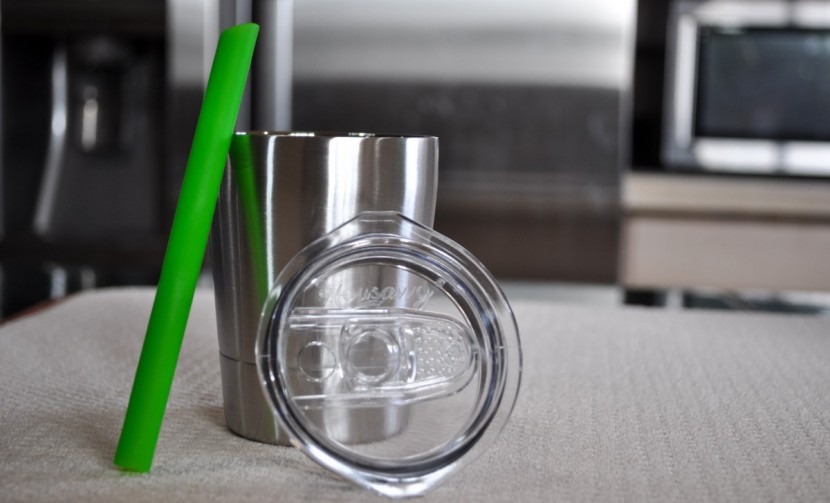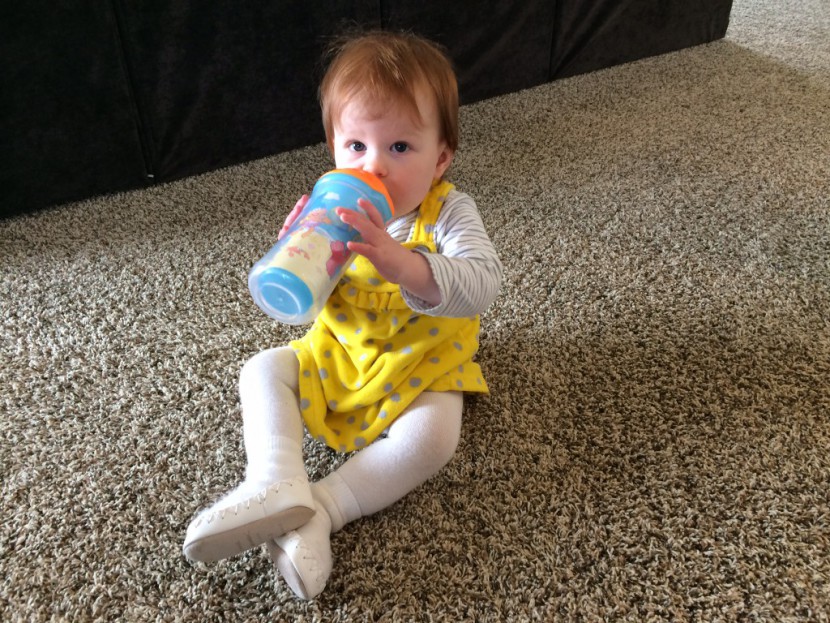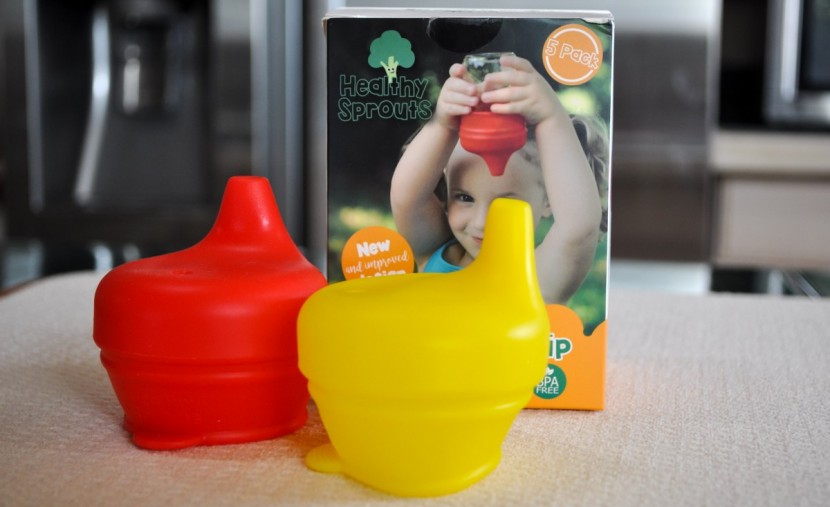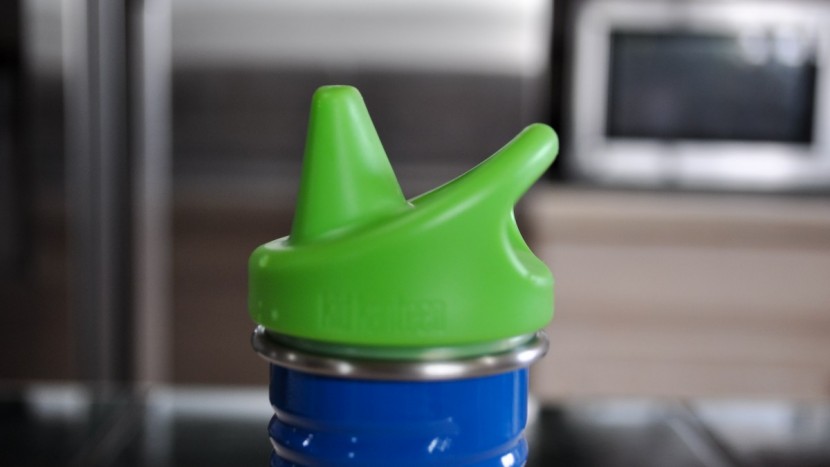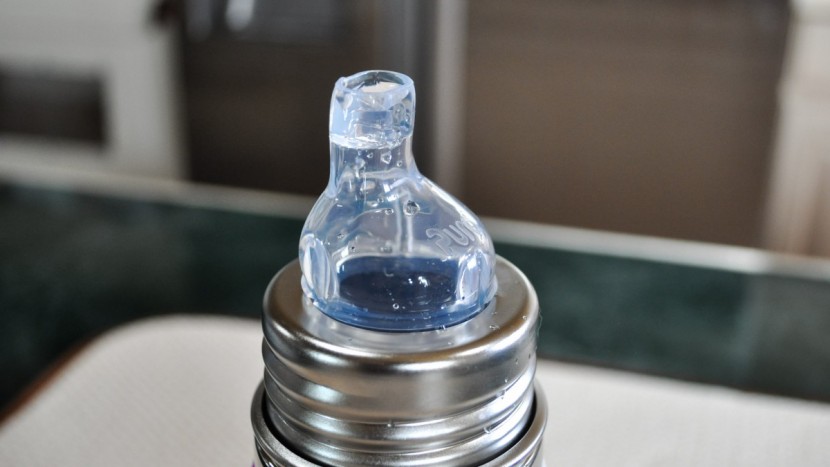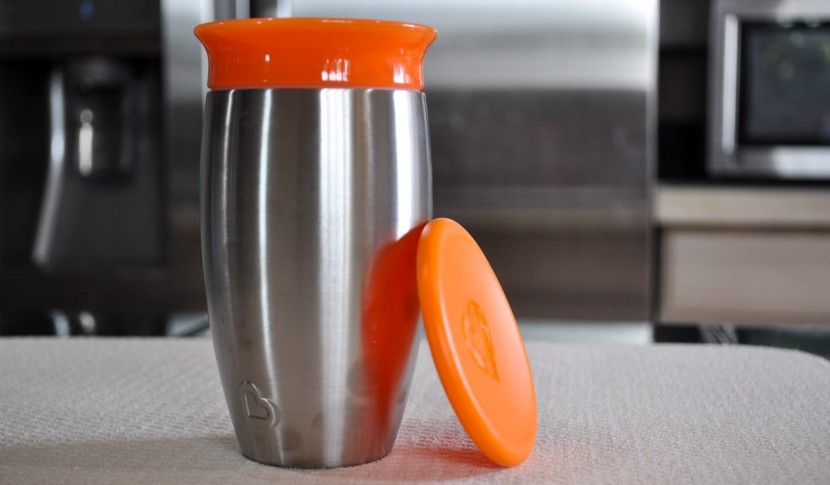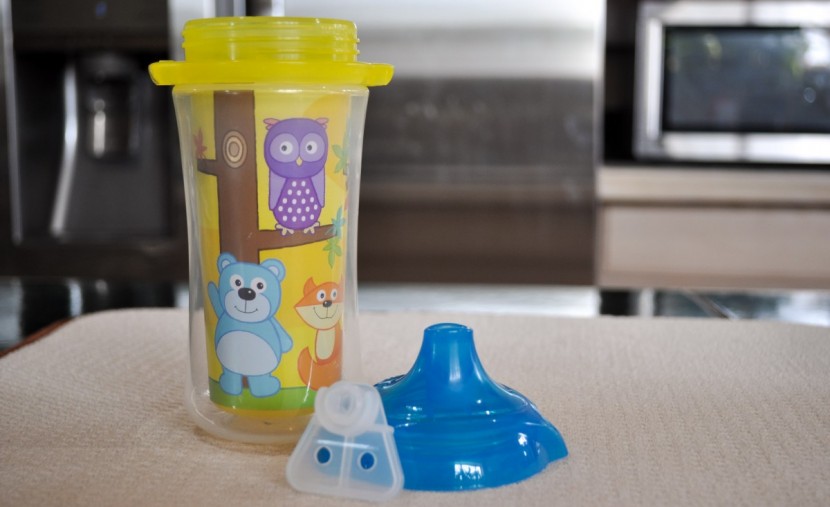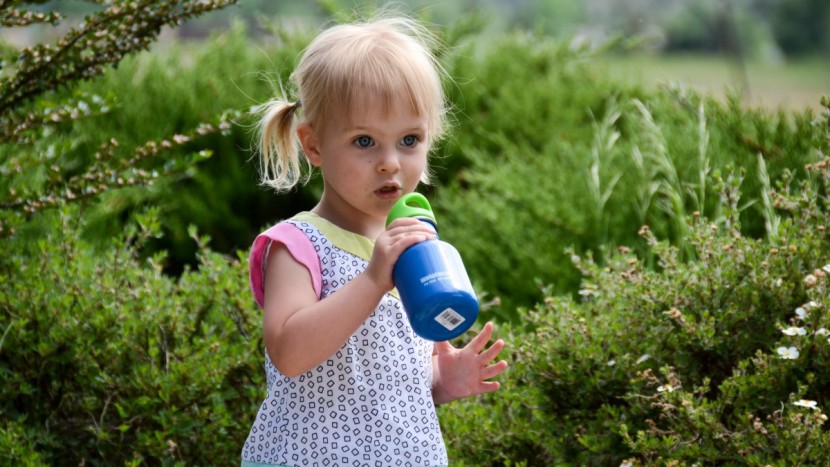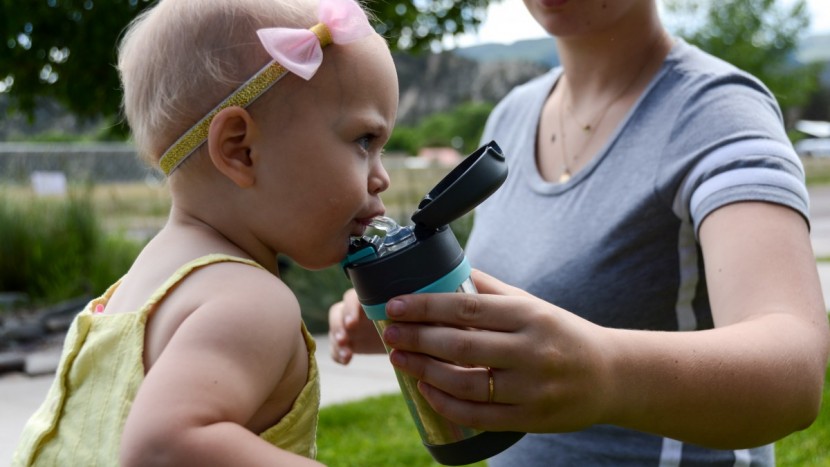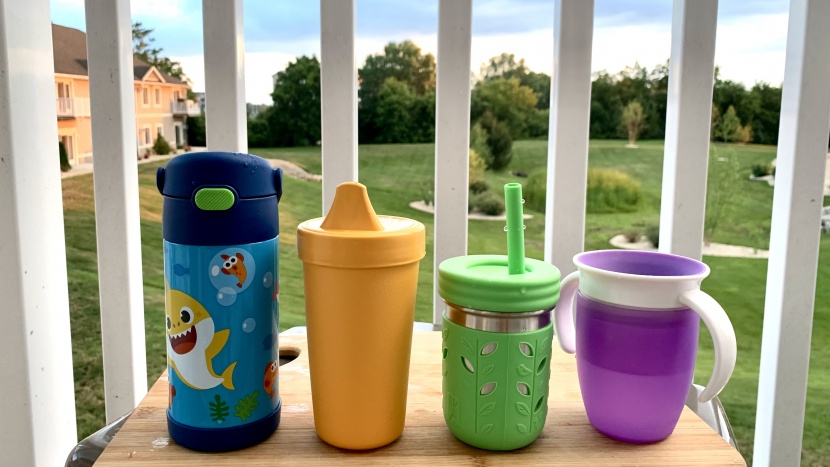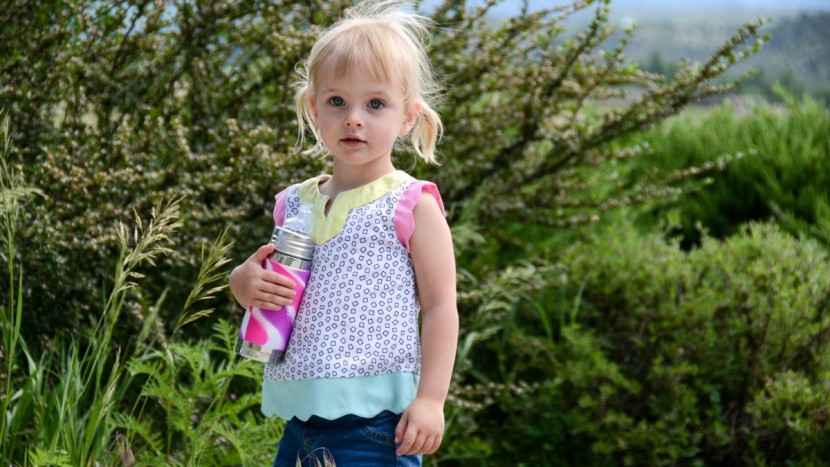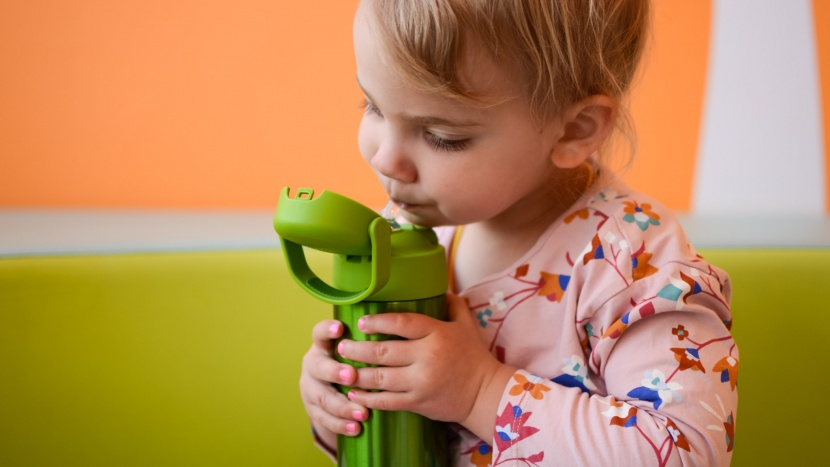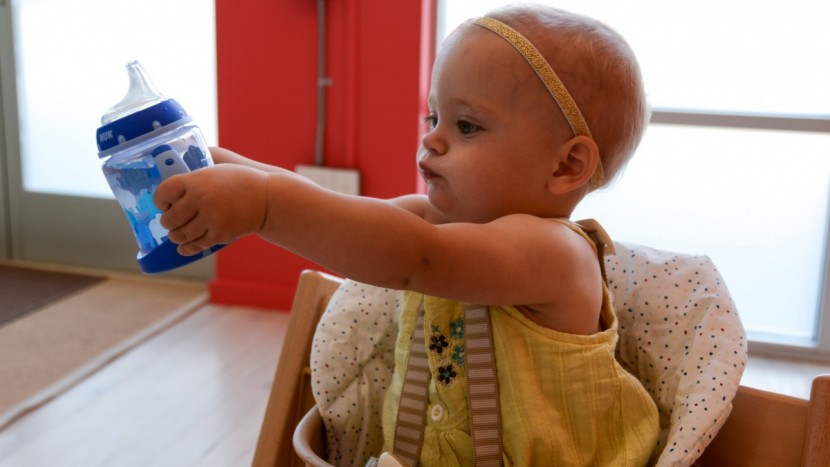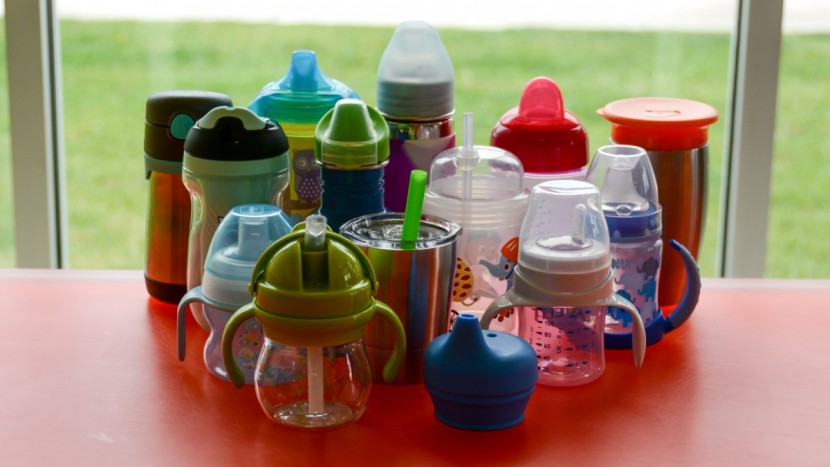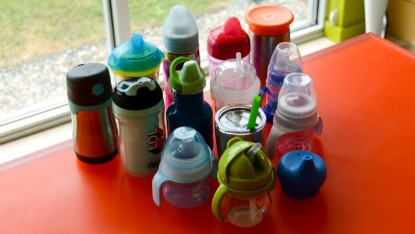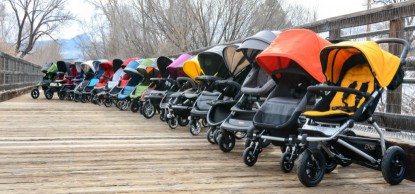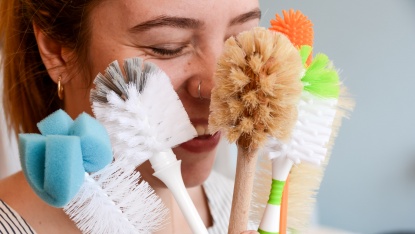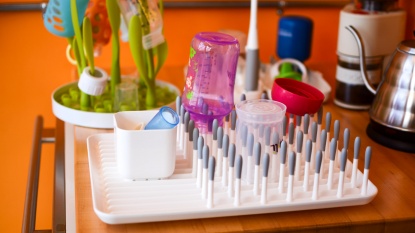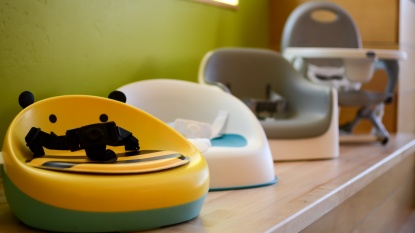With so many considerations, finding the best sippy cup can seem daunting. The right choice can minimize frustrations for toddlers and parents by preventing leaks, being easy to use and clean, and offering healthy options for a child's developing systems. We'll walk you through various cups and review the features we feel are the most important.
While all the plastic cups we tested are BPA-free, that doesn't mean they aren't a potential health concern. Studies indicate a variety of chemicals in plastics that work as endocrine disrupters and create potential health concerns.
Related: Are Plastics Safe for Baby Bottles and Sippy Cups?
Why Get a Leak-Proof Cup?
Do toddlers need a leak-free cup, or can they use a regular cup without utilizing this convenience product? Leak-proof cups are not necessary to acquire the skills to drink from a cup. Some experts even argue that using a sippy can delay a child's desire or ability to master ordinary cup use. Plus, leak-free cups can carry the risk of potential injury when misused (tripping with a hard spout in their mouth). So why consider letting your child use a leak-proof cup?
- Hydration — Leak-proof cups keep children hydrated without the mess of a regular cup.
- Transportability — Leak-proof cups are easier to transport.
- Convenience — A useful way to offer toddlers increased independence without mess concerns.
- Bridge — These cups can work with regular cups as a helpful (though not necessary) bridge between the bottle and ordinary cups.
Most parents love the advantages of limited spills, transportability, and durability. So, while it is essential to help children master the skills for cup use, a leak-proof cup can make life easier.
Disadvantages
- Potential Injury — Leak-proof cups are responsible for about 1 ER visit every 4 hours in the United States. These injuries are typically the result of improper use by children who keep a spout in their mouth while moving. Hard spouts can cause facial or palate lacerations if children fall while drinking. Best practices include toddlers sitting when sipping.
- Increased Risk of Dental Decay — Given the spill-proof design, parents may be more likely to use the cups with milk and juice. The American Dental Association has concerns that increased exposure to carbohydrate drinks can potentially increase dental caries (aka cavities).
- Delay Using Real Cups — There is a small concern that parents will skip helping children to use regular cups if a sippy cup is always around. Also, children may balk at practicing with a regular cup when an easier choice is available.
Types of Leak-Proof Cups
There are three types of leak-proof cups.
- Transition cups — typically for babies 4 to 9-12 months, depending on the design. They frequently hold 8 oz or less, have flexible spouts and handles, and are lightweight (often plastic).
- Toddler cups — typically for children between 1-3 years old. They usually hold 7-12 oz and maybe thinner with a contoured or taller design.
- Kid Bottles — for children over the age of three and are not always “spill-proof.” These have larger capacities, are often insulated, and feature sport spouts, hard spouts with straws, or flexible straws.
Key Considerations
Not all sippy cups are created equal. It's essential to consider the differences between the options and how they could influence daily use.
Materials
Leak-proof cups come in glass, stainless steel, and plastic, with silicone parts. Some cups are entirely plastic, but most use a combination of materials. Different components also indicate a cup's potential longevity and cleanability. The materials can potentially impact toddler health, so we highly recommend understanding each type's benefits and drawbacks.
Stainless Steel
Food-grade stainless steel is an excellent choice for leak-free cups. It does not leach chemicals, lead, phthalates, or other elements into the contents; there is nothing intrinsically unhealthy about steel. Stainless steel is easy to clean and frequently comes in insulated varieties to keep liquids cold. There is some evidence that suggests that breast milk nutrients may cling to the stainless steel. However, this possible occurrence is only a concern if you use the sippy for feeding instead of hydration. Since most toddlers no longer drink breastmilk or don't rely on it for a primary nutrition source, it isn't a big deal. Stainless steel is an excellent, healthy alternative to plastic. It is also eco-friendly and durable, and toddlers can use the cup for several years. We'll say cheers to that!
On the downside, stainless steel is heavier than plastic, especially if it's double-walled insulated, which means some children may find steel options more challenging to hold and carry. Keep in mind that a cup's weight may not be as big of a concern for toddlers as it is for babies. Still, it is a factor to consider if your little one has limitations that make holding heavy items more challenging.
Plastics
Plastic is inexpensive, lightweight, versatile, and user-friendly for toddlers and parents alike. Plastic cups come in various styles and graphics, and their smaller prices mean fewer worries if they get lost or broken. However, plastic has potential health concerns that we believe you should consider before deciding which leak-proof cup is best for your child. We feel cups with steel or glass bodies are better choices for several reasons outside of plastic safety concerns.
Related: Are Plastics Safe for Baby Bottles and Sippy Cups?
Silicone
Valves, straws, spouts, or sleeves are typically silicone. In general, medical-grade silicone in cups doesn't have much exposure to contents and is considered a safe material for children's cups. Silicone spouts are flexible and mouth-friendly compared to their plastic counterparts. Also, silicone is less likely to cause injury if a child falls while drinking. However, we feel it is worth noting that some preliminary studies indicate that some silicone can break down when exposed to heat, so we suggest hand-washing to avoid this.
Parts
The number of parts in your sippy can influence how often you use it. Therefore, you should consider the parts that make up the whole. How easily the parts fit together and how challenging they are to keep clean are factors you'll need to contend with regularly. A cup with only a few parts that snap together is more desirable than a cup with four or more parts that are complex in nature. Most cups become easier to assemble with time, but the number and complexity of the parts are an issue when cleaning or misplacing them.
Spouts
There are various spout types, including hard plastic, soft silicone, straws, and cup-like edges. Each spout has positive and negative attributes.
- Hard Spouts — Hard spouts are usually plastic and have no flexibility. They are durable and chew-resistant but are the primary cause of sippy-related injuries.
- Soft Spouts — Most soft spouts are silicone, mouth-friendly, easy to clean, and often easy to use. Using soft spouts is less likely to result in serious injuries.
- Straws — Straws are typically valve-free and soft (with decreased injuries). The ADA and most dentists prefer a valve-free spout because it requires less sucking, and straws tend to move the liquid to the back of the mouth, which can potentially decrease dental decay.
- Cup-like Edge — Cup edges work from any angle and have a leak-proof valve incorporated into the edge that requires sucking to drink. The benefits are a cup-like experience, less risk of injury, and practice that could translate to ordinary cup use. The Munchkin Miracle 360 Stainless has a cup-like edge.
Valves
Valves are a critical part of any leak-proof cup. The valve is the part that prevents leaking but still allows children to pull liquid out when sipping. The American Dental Association (ADA) prefers toddlers to use regular cups instead of leak-proof products. They advise choosing valve-free options (not leak-proof) and recommend limiting sugary liquids (juice, soda, milk, etc.) to avoid dental decay. See this ADA article for information about early dental concerns and training cups. However, most parents desire a leak-proof cup to avoid messes. We agree that safety and exercising proper oral hygiene by using a regular cup is essential; however, we suspect parents are unlikely to forgo a sippy. The straw design on the Thermos FUNtainer aligns better, though it has a somewhat leak-free valve inside.
Safety Considerations
Be aware that leak-proof cups can bea potential hazard to children. Between 1991 and 2010, approximately 45,000 pediatric injuries presented to ERs were a direct result of using sippy cups. Leak-proof cups are only a convenience item and are NOT a developmental milestone or a requirement for learning how to use a cup. Some specialists feel they can even delay a child's ability to use or interest in real cups.
Given the popularity of leak-proof cups and their ability to keep children hydrated without the mess, what should parents do? The following are best practices, as outlined by the American Academy of Pediatrics (AAP) and the ADA:
- To avoid injury, children should be stationary, preferably sitting
- To avoid Early Childhood Caries (dental decay), cups should only contain water, never sweetened or carbonated beverages
- To avoid the complications of dental decay and dentition formation, toddlers should only utilize a leak-free cup for short periods
- Offer children a real cup whenever possible
It is critical to consider spout design and ADA concerns. However, we still feel that sippy cups can have a place in your baby gear collection, at least on a limited basis. As long as your toddler practices with a standard cup, a sippy can be a useful addition to your parenting arsenal to keep things clean. Some of the options in this roundup have a hard spout, so you should only let children use them while sitting down or stationary to avoid potential injuries. You might also consider using them only with children who've mastered standing and walking just to be safe.
How to Choose the Best Sippy Cup
Once you determine if you need a transition cup or a toddler sippy (based on age), then you are ready to narrow the cup field. Considering key features can help you choose the best option for your child and goals. All of the options we recommend in this review are good, but one is likely a better fit, depending on your needs.
First, Health, and Materials
Health is a crucial matter to us at BabyGearLab. Whether you want to or not, everyone comes into contact with chemicals in their ordinary lives, and some of them are unhealthy. Toddlers have sensitive developing systems that could suffer more from exposure to unnecessary chemicals because they are still growing. Thus, we strongly believe in limiting their exposure when and where possible. There are more concerns surrounding materials in sippy cup bodies than any other variable regarding chemical exposure. Given health concerns and cup durability, we feel materials are a natural place to start the cup selection process. We believe stainless steel has the most to offer, with the least amount of drawbacks.
Next, Ease of Use and Cleaning
Cups should be easy to use, or little ones will quickly leave them in the dust. Tiny tots typically select cups based on the color, designs, or characters on the sippy's main body. However, if the chosen cup is challenging to use, they move on to the less visually exciting choices that are easier to use and drink from. While ease of cleaning, eco-health, and leak-proof are critical concerns to parents, if your child can't get liquid out of the cup, they aren't going to use it. If the sippy isn't easy to clean or assemble, you aren't going to fill it. Because who wants to spend extra time cleaning complicated cups? These factors are why many cups gather dust or make their way to the trash. While most cups require a baby bottle brush for cleaning, some also need a straw brush. Using special brushes isn't necessarily a deal-breaker, but taking extra time or having lots of parts could be depending on your goals. Most families have a bottle brush left over from the baby days, but a pack of straw brushes is an excellent addition to any kitchen.
Last, Leakage
Parents typically purchase a sippy to avoid the messes that can arise from regular cups with their ability to spill. A leak-free cup shouldn't leak, which is why we test the cups in our review for leaks through a side-by-side comparison with the competition. Keep in mind that the type of liquid you use in your sippy and where you plan to use it can influence what level of leakage you're comfortable with. For instance, if you are using a cup with water in your home, you may only need to avoid significant leaking, and a few drops escaping is fine. However, if you're taking a sippy along in your diaper bag, any significant leaking might be a deal-breaker.
Conclusion
So before you stand with wide-eyed bewilderment in front of a giant shelf of leak-proof cups, think again about the performance characteristics we discussed and which are the most important to you and your child. In our review of sippy options, we really feel there is something for everyone, no matter what performance attributes or metrics you feel are important. Our award winners and top-ranking options reflect what we would and have bought for our children.

